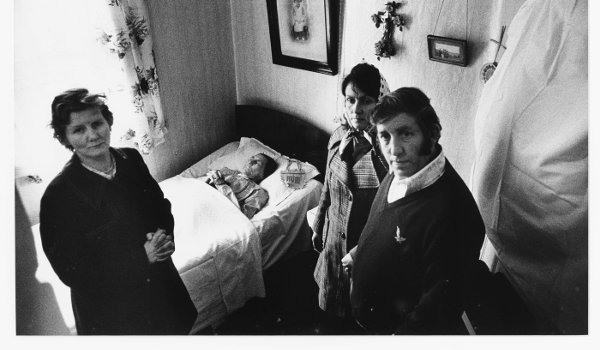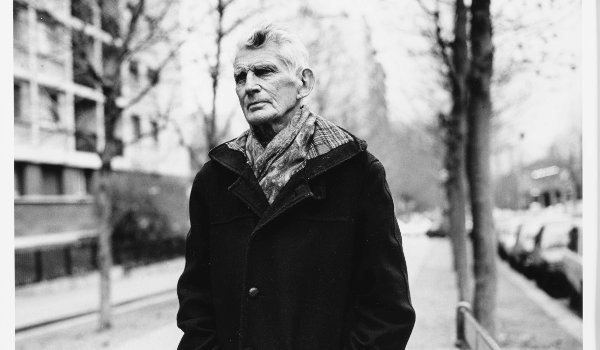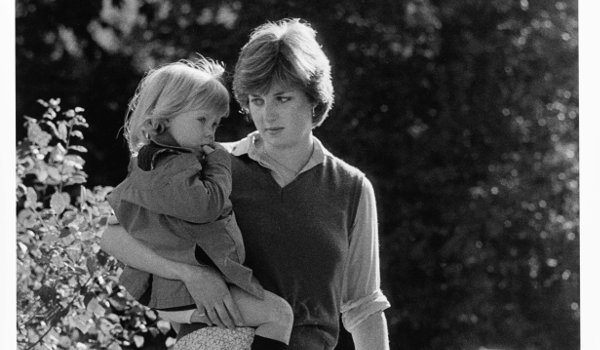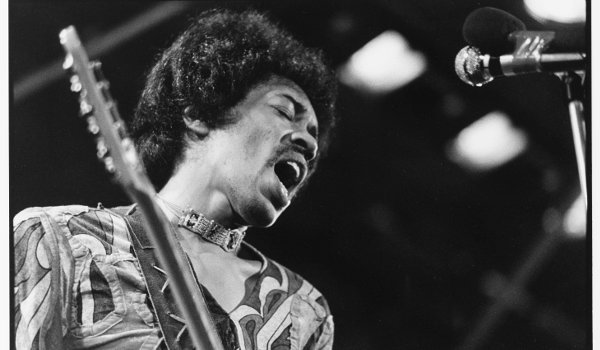IF THERE’S any truth in the old adage that ‘a picture paints a thousand words’, then surely the same could be said for a photograph – and John Minihan should know.
While his name may not ring a bell outside of photography circles, there’s no doubt that you’ve probably seen one of the acclaimed Irishman’s photographs somewhere over the last few decades.
With a career spanning over 50 years, Minihan has not only seen it all – he’s captured it all for posterity with his trusty Rolleiflex camera, too.
He has photographed everyone from Laurence Olivier to Andy Warhol, Christian Dior to The Beatles and Samuel Beckett to Francis Bacon, and he was the first photographer to snap a photograph of the then Lady Diana Spencer once rumours of her courtship with Prince Charles surfaced in 1980.
Not bad for someone who stumbled into photography as an office boy at the Daily Mail.
Born and raised in Athy, Co. Kildare in 1946, Minihan was raised by his aunt and uncle and moved with them to London at the age of 12. At 15, he landed the office boy job and a year later, the opportunity for a five-year apprenticeship in the newspaper’s darkroom cropped up.
“That’s the kind of alchemy that people don’t understand anymore,” he says from his home in Ballydehob, West Cork, where he now lives after many years in Britain.
“I’m still a film photographer, but in this digital world, people don’t quite understand the magic of seeing a print appear before your eyes.
"So I had all that wonderful knowledge of paper and chemicals and seeing wonderful photographers in the ‘60s, who worked 24/7. It was wonderful, a terrific time. That was really my inspiration.”
It wasn’t long before he was putting his newfound skills to good use during London’s swinging sixties in order to supplement his apprentice’s meagre wage.
“The musical aspect was so important in my life when I was apprentice. You start off the first year earning one pound fifty shillings,” he laughs.
“In the ‘60s in London, it was Mary Quant and the mini-skirt, it was The Who, it was the Rolling Stones from down the road, it was The Beatles from Liverpool... There were all these magazines like Disc and Melody Maker, so I took my camera and got those images published in these magazines to try to earn some extra money.
"I remember seeing The Who play the Marquee Club in London, just four innocent young lads about to explode on the world.
"I photographed everyone from The Animals to The Stones during that period; The Beatles, The Beach Boys, Jimi Hendrix, Chuck Berry, Little Richard... the lot. I loved it then, and I still do now.”
He went on to join the Evening Standard at the age of 21, becoming their youngest staff photographer – but he never forgot his roots and continued to return to his hometown to capture everyday life in between his assignments.
 Beckett met with Minihan after seeing his photos of the wake of Katy Tyrell
Beckett met with Minihan after seeing his photos of the wake of Katy Tyrell“At 16, I was reading a lot of books on social documentary photographer; photographers in America like Walker Evans and various people,” he explains.
“I remember being back in Athy during the summer of 1962 or ‘63. A cousin of mine was getting married, and he really couldn’t afford a photographer, so I said ‘I’ll do the pictures’.
At that moment, I realised ‘This is really important and I’m going to start documenting the tradition which I came from, as an Irish photographer.”
He continued to take photos of Athy for many years, but in the late ‘70s, he took a set that would define him as a photographer. “I really wanted to put together this social documentary of Athy, so I photographed love, life and death,” he says.
“In 1977 I was very privileged to be in the town when Mrs. Katy Tyrell died. I got her family’s permission and did a sequence of photographs that was called The Wake of Katy Tyrell.
"Those photographs are really important to me, because it was through those photographs that I met Samuel Beckett. It was probably the most important set of pictures I’ve ever taken in my life.”
It’s difficult to mention Minihan’s body of work without mentioning his portraits of Beckett. Several encounters between the photographer and the famously media-shy playwright, novelist and poet took place over the years.
“I’ve always been interested in the collaboration between writers and photographers,” he muses.
“I first heard Beckett’s name mentioned in 1969. I was on the editorial floor of the Evening Standard and some backbench sub screamed across to the picture desk, saying that some obscure Irish writer living in Paris has just won the Nobel Prize for Literature.
"That immediately intrigued me, because at the time, it wasn’t the most fashionable time to be Irish in London; the IRA were planting bombs, etc. So suddenly, I thought ‘This could be a nice story – I must find out about this Irishman in Paris!’. I kind of made it my business to track this man down.”
A futile attempt at correspondence around that time failed, but when Minihan heard that Beckett was in London in 1980, he made it his business to arrive at his hotel to present him with an offer that he probably wouldn’t refuse.
 Beckett photographed on Boulevard St. Jacques in Paris in 1985
Beckett photographed on Boulevard St. Jacques in Paris in 1985“You don’t just photograph a writer like Beckett, you offer him something,” he says. “I’d known enough about Sam’s work, because I made sure to read as much as I could about the writer – the author of Waiting for Godot, Endgame, Krapp’s Last Tape.
"I got the opportunity to photograph some of his plays, and the more I read about him the more I felt that this man would like my pictures of Athy; the austerity of a small Irish town, funereal days, corner boys waiting for the first bus to come in in the morning and the last bus at night.
"They were almost characters out of his plays; they were Estragon and Vladimir, they were Didi and Gogo.
“So I left a note at the front desk of his hotel, a message explaining that I was an Irish photographer and I understood his aversion to journalists and stuff like that, but I had been photographing Athy for 20 years and I’d like to show him the photographs.
“The next morning I phoned up, and after a couple of minutes, this gentle Dublin voice came on and said ‘Mr. Minihan, yeah. How about 9 o’clock tomorrow morning?’.
"So I went down to the Hyde Park Hotel the next day expecting Sam to come downstairs to the lobby to join me, but in actual fact, he invited me up to his room. That in itself is a very personal thing; he was courteous to the point that he wanted to look at these photographs without sitting down in the lobby with other people around.
"In this single room, at the back of the hotel, he spread these 20 photographs on the bed – The Wake of Katy Tyrell and various characters – and he was curiously interested. He seemed to spend a good while, 20 minutes or so, looking at the pictures and he was interested that I knew the names of these people.”
Beckett agreed to allow Minihan to take photos of him in the room 604 that morning.
“I remember him standing up, and in the first exposures, he’s actually smiling and he’s got one hand on his waist – what we might call ‘throwing a few shapes’,” he recalls with a chuckle.
“I think he probably thought that I’m a nice man, a good photographer and that he’s probably never going to see me again, and that’ll be the end of it. But with me, it’s never the end, because 1/16th of a second is nothing out of a genius like Samuel Beckett’s life.”
Minihan continued a friendly correspondence with the amiable Beckett over the ensuing years, but the Holy Grail was capturing him in his adopted city of Paris.
 Lady Diana Spencer photographed in London in 1980
Lady Diana Spencer photographed in London in 1980He finally got his wish in 1985, when he visited the city and captured Beckett in a iconic and hugely acclaimed series of shots that depict the near-80-year-old in a French café on the Boulevard Saint Jacques, bundled up against the December chill with a brimming ashtray of cigarillos and an empty coffee cup in front of him.
As always, the shots were captured on the photographer’s favoured black and white film, which seems to lend an extra gravitas to the scene.
“We met at three o’clock and chatted about bits and bobs, had a couple of brandies and lots of coffee, and I thought ‘F***, this is never going to happen’,” he laughs.
“About quarter to five, he said ‘Would you like to take a picture here?’ because the light was already disappearing. Suddenly I thought, ‘Oh, God!’, so I took out my camera, my Rolleiflex, and I just managed to capture it.
"Another five minutes and it probably would have been too late. It was one of these moments that was meant to be.”
Of course, it stands to reason that despite a plethora of willing and able subjects that you meet over the course of a career, there will also be a certain number who prove problematic.
“Very few really, but there are always some people who are difficult,” he says diplomatically. “I remember some years ago, going to photograph Sandra Bullock.
"She was staying in the Dorchester Hotel, and I went in to see her and she was wearing dark glasses at 10.30 in the morning. I asked her to remove them, and she suddenly got very angry. So I said ‘Look, I’m sorry, but my editor wants to see what you look like.
"If I go back with photos of you wearing dark glasses...’. She got very annoyed and said she was going to report me to my editor, so I gave her press guy my card and said ‘Phone him up. I’m here to do what I do and that’s it, I couldn’t give a shit’.
“But my editor at the time was so glad that I did that, because they cancelled her critique in the paper. So she was just a bit precious. But in the main, people are good. I find that people of lesser talent are more objectionable in certain areas.
"Real talent doesn’t need to be difficult; when I photographed William Burroughs, he called me a ‘painless photographer’. I just don’t take up much of these peoples’ time – whether it’s Sam, or Francis Bacon, or whoever. And they appreciate that.
"It’s capturing little vignettes from their life – boom, boom, boom. Not ‘come into my studio for three hours’.”
 Jimi Hendrix photographed at the Isle of Wight Festival 1971, shortly before his death
Jimi Hendrix photographed at the Isle of Wight Festival 1971, shortly before his deathGiven that he forged a career during the golden age of photography, when skill and experience was all that counted in capturing the perfect frame, what does he make of the digital age, when airbrushing and Photoshop can be done at the touch of a button?
When Instagram has made a photographer of everyone? Has the ‘art’ been taken out of photography? Minihan, who still uses his Rolleiflex cameras as well as a 35mm Nikon from the 1960s, believes so.
“There used to be the old adage ‘Seeing is believing’, which isn’t true anymore,” he says. “Of course, there’s always been manipulation in photography, but today it’s rampant; people turning grey skies into blue skies, that kind of thing.
"For me, I’m just a black and white film photographer, so as long as I’m on the planet, nobody’s going to mess around with my pictures.
“I’m not really too au fait with technology because it’s constantly changing. I understand it in a theatre of war, in Afghanistan or Libya or Syria – guys working for agencies around Europe need to get their material through. But I don’t have those kind of pressures on me.
"Having said that, taking pictures on film is pressure enough – a) finding the film and b) getting someone to process it. It’s a nightmare, that’s why I’ve got no hair left,” he laughs.
“But it’s just one of those things, isn’t it? Everyone is a photographer today, or at least they think they are. A lot of stuff just won’t endure.”
As for the work that he is most proud of over his extensive career?
Forgot your Becketts, Bacons and Burroughs’, your movie stars and your high-flying musicians. When all is said and done, it is the work in his native town as a young man at the beginning of his career that he is most proud of.
“I call those pictures ‘The Silence of the Still’,” he says, pausing to consider the question.
“There’s so much going on with everything today: movies, for example, which have excessive music that has no relevance except to prop up a bad script. The silence of the still is best felt with The Wake of Katy Tyrell.
"For all the people that I’ve photographed – be it celebrities or noble laureates or royalty – those pictures of Athy and Mrs. Tyrell are most important to me, because there’s a certain truth in that reality; it will happen to us all some day, and everything else doesn’t mean diddly-squat.
"That’s why ‘the silence of the still’ is so important: to have that understanding, irrespective of the world of glamour and so-called celebrity.
"I think when Samuel Beckett allowed me into his world to photograph him, he knew that because he understood why I was photographing those people. I think, and I hope, that other people can understand it, too."

